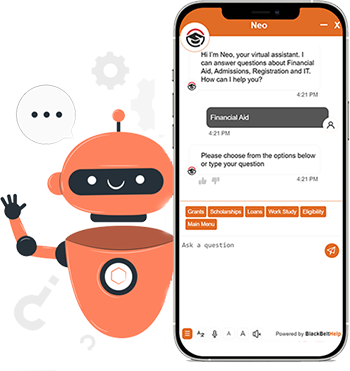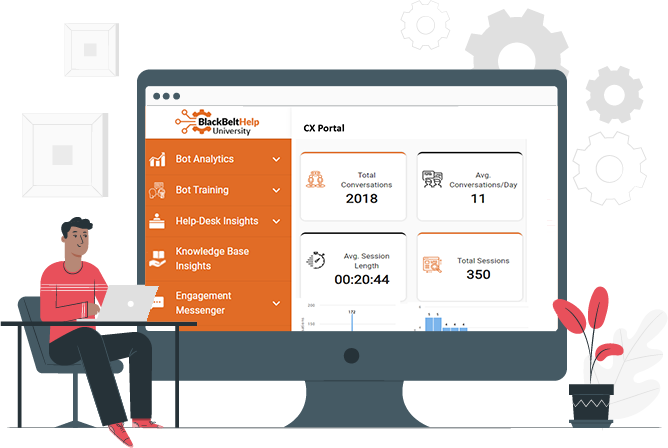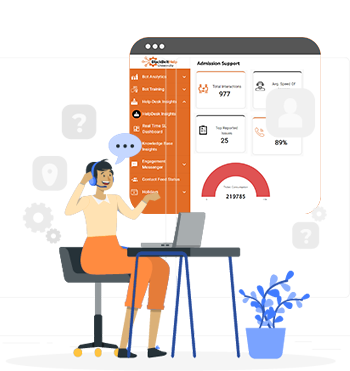The Ideology behind Student Engagement and Student Retention
Student Retention has always been a major concern for higher education institutions. “Over the past 20 years, roughly 31 million students have enrolled in college and left without receiving a degree or certificate.”– According to a National Student Clearinghouse Research Center Report
Identifying at-risk students and utilizing tools (both self-help and mediated) to encourage increased student engagement lies at the heart of retention efforts. According to College Atlas, approximately 30% of the higher-ed students in the US drop out after the first year.
Student engagement lays the foundation for developing learner aspirations. An engaged student learns best when they are intrinsically motivated for competence. As stated by the National Student Clearinghouse Research Center, 48% of students deflect out of college in the United States. The major reason behind such a huge loss can be traced to a lack of proactive engagement with prospects and students. The solution: continuous and personalized engagement with prospects and students at every stage in the enrollment and services provision lifecycle.
Strategies Influencing Student Retention Services
Technology can and should influence learning activities, communication, and engagement strategies to encourage student involvement. A few strategies that can help bridge gap in an institution’s student support ecosystem include:
– Data-driven insights: The insights provided by a data-driven system helps institutions identify at-risk students and intervene in time to achieve student success. We, at BlackBeltHelp, provide instant in-application support and real-time usage statistics to measure early warning signs and get students connected to essential resources. With the implementation of data-driven actions, an institution can optimize support and increase persistence and retention rates.
– 24×7 Virtual OneStop Inbound Support: In a consumer-driven world, students also expect convenience and speedy responses for their issues without physically reaching out to campus resources. A 24×7 Virtual OneStop addresses the student queries via phone, chat and voice bots, SMS/text, live chat, web ticket, and email; instantly and accurately. This immediately increases the level of satisfaction and engagement amongst students. At BlackBeltHelp, we provide relevant tools and personnel to address the spike in queries ranging from admissions/enrollment, financial aid, student accounts, and IT/LMS and more with proficiency.
– Outbound Campaign Management: An engaged student is a retained one – always. It is all about engaging a student first and then expecting retention in return; which is why the unrivaled expertise at BlackBeltHelp creates robust campaigns via phone, chat, chatbot, and SMS/text to encourage and engage students and drive desired actions. A comprehensive multi-modal annual campaign is created with institutions that will automatically send outbound communications at each stage of the student lifecycle. This removes barriers and encourages desired student actions by making it easy to complete. Moreover, an institution can identify their students’ behavior and make improvements via our post-campaign analysis.
– Artificial Intelligence Chat and Voice bots: BlackBeltHelp has made tremendous progress with a more intuitive and predictive voice and chat bot that assists students when they run into difficulties. Communication with bots is a two-way, real-time, highly accurate process that encourages students to easily get answers to their most detailed queries. For example, a bot accelerates student support services by delivering 24×7 immediate support without the need for a human. Institutions leverage AI chat and voice bots to allow expert staff resources to focus on highly complex or value-driven face-to-face interactions with students while the bot focuses more on repetitive and time-consuming queries.
Bottom Line:
The national graduation rate was 35% for the year 2018 considering the population age 25 years and above. The figure above is to emphasize the fact that higher education today should be focusing on student-centric processes. Improving retention rates in colleges requires perceiving the pain points to enhance student outcomes. Personalized student support helps a great deal in achieving student success.










